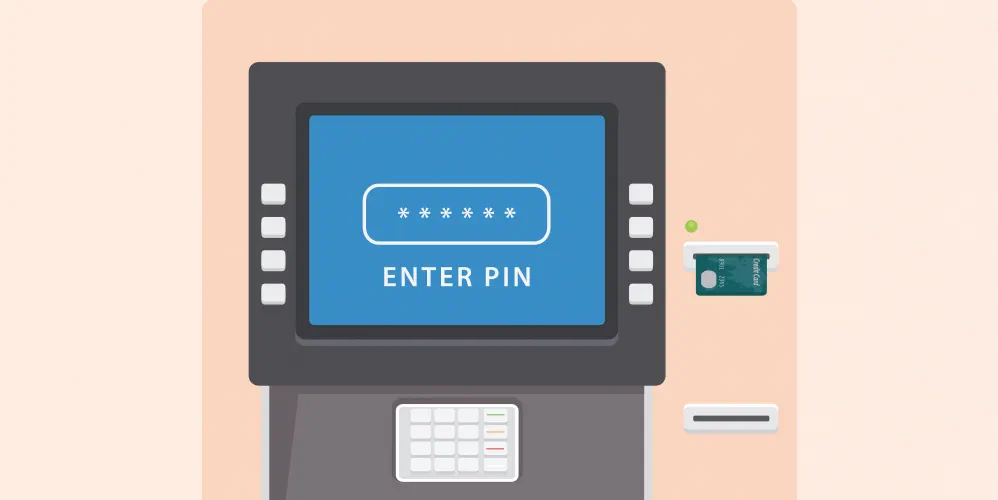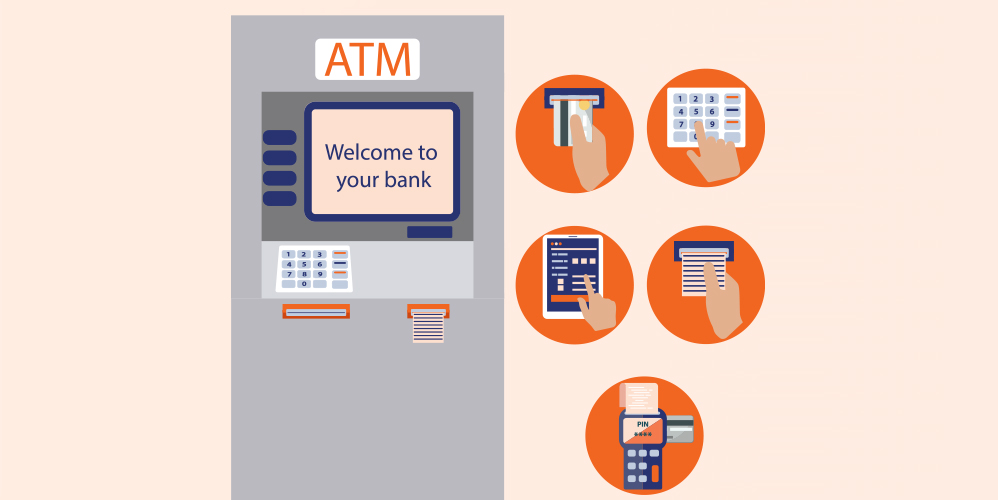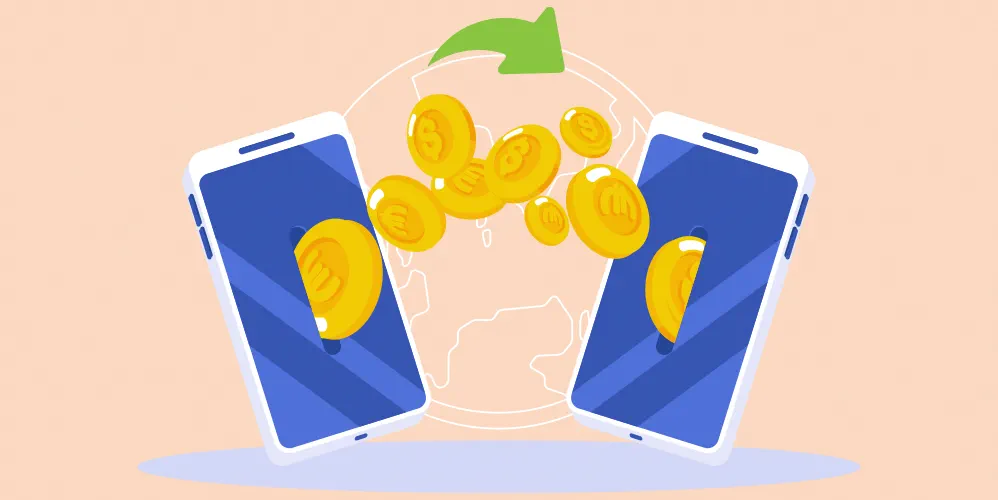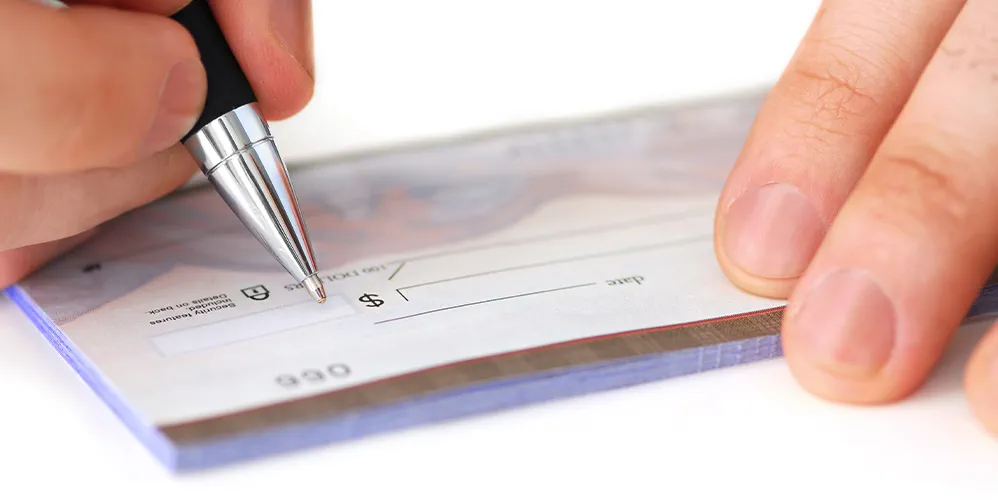
Decoding ATM: Full Form, Meaning, and Usage Explained
17 Nov 2023

Table of Content
Definition of ATM
ATM stands for an “Automated Teller Machine”. An ATM is a computerized device that enables individuals to conduct various banking transactions without the need for a human teller. It provides a convenient way to access and manage our bank accounts, even outside the banking hours.
Full Form of ATM
As mentioned earlier, ATM stands for “Automated Teller Machine”. The term "automated" refers to the machine's ability to perform tasks automatically, without human intervention. "Teller" refers to a bank employee who typically handles cash transactions. By combining these two concepts, the term ATM aptly describes a machine that carries out the tasks traditionally performed by a human teller.
History of ATMs
1. The Birth of ATMs
The concept of ATMs can be traced back to the 1960s. The first ATM was introduced in 1967 by Barclays Bank in London, England. It was a simple machine that allowed customers to withdraw a fixed amount of cash using a specially designed paper voucher and a personal identification number (PIN). This breakthrough innovation aimed to provide customers with greater convenience and reduce the need for human tellers.
2. The Magnetic Stripe Revolution
In the early 1970s, the advent of magnetic stripe technology revolutionized ATMs. With the introduction of magnetic stripe cards, customers could now insert their cards into the machine and access their bank accounts. This innovation eliminated the need for paper vouchers and significantly improved the user experience. The magnetic stripe technology also paved the way for more advanced features in the future.
3. Networked ATMs and Shared Banking
During the late 1970s and early 1980s, the concept of networked ATMs emerged. This meant that ATMs from different banks could be connected to a central network, enabling customers to access their accounts at any participating bank's ATM. This development opened up a world of convenience, as customers were no longer limited to their own bank's branches for cash withdrawals. This marked a significant milestone in the evolution of ATMs.
4. Enhanced Functionality and User Interface
As the 1990s rolled in, ATMs underwent major transformations. Banks began introducing ATMs with enhanced functionality, such as the ability to deposit cash and checks, transfer funds between accounts, and even pay bills. These additional features expanded the range of services customers could access at the ATM, making them even more indispensable in everyday life. User interfaces also underwent significant improvements. Earlier ATMs had monochromatic screens and a limited number of buttons. However, the advancement in technology led to the introduction of full-color screens, touchscreens, and intuitive graphical user interfaces (GUIs). These enhancements made using ATMs more intuitive and user-friendly.
How Does an ATM Work?
Now that we know what an ATM is, let's delve into how it actually works. At its core, an ATM is a combination of hardware and software components. When you approach an ATM, you insert your plastic card, usually a debit card or credit card, into the card slot. The card contains a magnetic stripe or a chip that stores your account information. Once the card is inserted, you are prompted to enter a Personal Identification Number (PIN) to authenticate yourself as the account holder. Upon successful authentication, the ATM establishes a connection with your bank's network to retrieve your account details. This allows you to perform various transactions such as cash withdrawals, balance inquiries, fund transfers, and even bill payments.
Advantages and Disadvantages of ATMs
ATMs offer several advantages that make our lives easier. Firstly, they provide convenient 24/7 access to our bank accounts, allowing us to withdraw cash or perform transactions at any time. This eliminates the need to visit a physical bank branch during its working hours. Additionally, ATMs are often located in various locations, making them easy to access in emergencies or when we are traveling. Furthermore, ATMs have simplified banking procedures, reducing the dependence on human tellers. They allow us to perform routine transactions quickly and efficiently, saving us time and effort. Moreover, ATMs have contributed to the growth of online banking, enabling us to check our account balances and make transfers without visiting a bank's website www.bankofbaroda.in
Despite their advantages, ATMs also have a few downsides. One of the main concerns is the risk of theft or fraud. Criminals may use various techniques to steal card information or observe PINs, which can lead to unauthorized access to accounts. It is crucial to be vigilant and follow recommended security practices while using ATMs.
Conclusion
In conclusion, ATMs, or Automated Teller Machines, have revolutionized the way we interact with our banks. They provide a convenient and accessible means to manage our bank accounts, offering services such as cash withdrawals, balance inquiries, and fund transfers. With their round-the-clock availability and user-friendly interfaces, ATMs have become an indispensable part of our modern banking experience. So the next time you walk up to an ATM, remember its full form, Automated Teller Machine, and appreciate the technology that allows you to handle your banking needs with just a few simple steps. Just be cautious and aware of potential security risks while enjoying the convenience that ATMs bring to our lives.
Popular Articles
Tag Clouds
Related Articles


The Importance of Pension Funds: Secure Your Future with Steady Retirement Income








-
Disclaimer
The contents of this article/infographic/picture/video are meant solely for information purposes and do not necessarily reflect the views of Bank of Baroda. The contents are generic in nature and for informational purposes only. It is not a substitute for specific advice in your own circumstances. Bank of Baroda and/ or its Affiliates and its subsidiaries make no representation as to the accuracy; completeness or reliability of any information contained herein or otherwise provided and hereby disclaim any liability with regard to the same. The information is subject to updation, completion, revision, verification and amendment and the same may change materially. The information is not intended for distribution or use by any person in any jurisdiction where such distribution or use would be contrary to law or regulation or would subject Bank of Baroda or its affiliates to any licensing or registration requirements. Bank of Baroda shall not be responsible for any direct/indirect loss or liability incurred by the reader for taking any financial decisions based on the contents and information mentioned. Please consult your financial advisor before making any financial decision.
Easy as 1-2-3: How to Deposit Cash Through an ATM
Learn how to securely deposit cash at an ATM with Bank of Baroda. Follow our step-by-step guide to ensure a hassle-free experience. Start today and safely deposit your money through an ATM.
Understand Credit Card Features, Benefits and Tips
Credit cards come with various features and benefits, and when use wisely & cautiously are a great way to manage your finances and build a credit line for your personal & professional aspirations. Before you get a credit card, it's important to understand the features, benefits, and things you should kind in mind while using credit card. What makes credit cards popular is the ability to make payments with the card or through UPI if you have a RuPay Credit Card. This can be incredibly convenient, but it also means you need to be careful to not overspend and rack up debt. Ultimately, it's important to weigh the pros and cons before deciding whether or not a credit card is right for you.


Leave a Comment
Thanks for submitting your details.